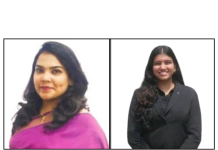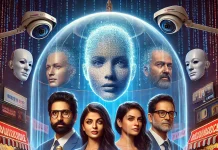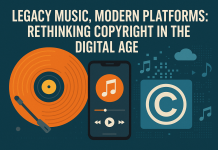Authors: Yukta Chordia and Kanika Chhajerh
The incident that took place at the Coldplay concert between Astronomer’s CEO Andy Byron and its Chief People Officer Kristin Cabot has become one of the most talked-about moments in recent memory. What started as a spontaneous interaction has snowballed into a corporate controversy unfolding resignations, brand opportunism and a swirl of legal questions.
While the internet may have responded with memes and mockery, the now- viral “kiss cam” moment opens up a far more layered conversation. This incident presents a compelling case study for examining three key dimensions: first, the privacy rights of individuals in public spaces; second, the ethics of turning viral moments into marketing tools and finally, the personality rights issues that arise when spontaneous clips are repurposed for commercial use without authorisation. This blog takes a closer look at each of these dimensions, not to offer all the answers, but to start asking the right questions.
The Fine Line Between Visibility and Violation
The first and most instinctive question that naturally follows after witnessing a viral incident like this is: what about the privacy of the individuals involved? In contemporary discourse, privacy is no longer about secrecy, it is about control; control over how your personal information, identity, and images travel across screens, platforms, and conversations, especially in the digital realm.[i]
In the present scenario, the privacy debate really takes off from the moment the duo’s mid-concert embrace, caught on the venue’s “kiss cam”, started making rounds online. These cameras are a staple at big events, scanning the crowd and zooming in on couples to flash them on giant screens for a few seconds of playful spotlight. Supporters of this practice often argue that the threshold of privacy in public places like music concerts or stadiums is very low.
After all, when you walk into a packed stadium or a concert hall, you are stepping into a space where the presence of cameras and public gaze are a part of the deal. In fact, most event tickets frequently include clauses permitting the organizer to use images or footage from the event for marketing, promotional, or other commercial purposes. The presumption? By attending such events, you have implicitly consented to being recorded.
But here’s where things get more complicated. Does being in a public setting mean you automatically give up your right to privacy? Since the incident occurred in the United States, it is worth examining how privacy is generally assessed there. It is assessed through three core elements: reasonable expectation of privacy, consent, and public interest. The landmark U.S. Supreme Court decision in Katz v. United States, emphasized that “the Fourth Amendment protects people, not places.” This ruling reinforced the understanding that privacy expectations can persist in public settings, though they are reduced compared to private environments. Similarly, in India, the Supreme Court in Puttaswamy v. Union of India recognized that informational privacy can exist even in public spaces and citizens retain control over how their image or personal data may be used.
These legal principles highlight a critical point: while the expectation of privacy in public may be lowered, it is not eliminated. Individuals still possess rights over how and where their personal information is used. So even if there was implied consent to being filmed for the event, the consent has limits, it did not extend to commercial use by unrelated third parties like the brands.
Hypothetically, had this occurred in India or the European Union for that matter, the legal response might have looked more stringent. Under India’s Digital Personal Data Protection Act, 2023, such images qualify as personal data, and any further processing in this case, especially for marketing in this case, requires free, specific, informed, unconditional, and unambiguous consent (Sections 4 & 6). Likewise, under the EU’s General Data Protection Regulation, the use of identifiable images demands a high standard of consent, typically one that is freely given, specific, informed, and unambiguous (Article 4). These standards make it unlikely that such secondary uses were lawful, especially where visible discomfort and reputational harm occurred.
Both frameworks reflect the principle of “purpose limitation” which prohibits data collected for one purpose from being used for another incompatible purpose. Thus, even if one assumes that the event organisers had valid consent to record attendees, the above frameworks place the burden squarely on the third parties (in this case, the brands) to obtain fresh, explicit consent before repurposing personal data for commercial gain.
On the other hand, the United States, approaches this issue through the lens of tort law, which recognises four types of invasion of privacy:
- Intrusion upon seclusion
- Public disclosure of private facts
- Placing a person in a false light
- Appropriation of name or likeness
The present scenario squarely falls within the fourth category, “appropriation of name or likeness” which occurs when someone uses another’s identity, whether a name or photograph, without consent. This practice by brands using the footage to promote themselves, sometimes inserting logos or advertisements, risk fostering an unauthorized association or implying that the individuals shown endorse the company. In this instance, it suggests a connection between Byron and Cabot and the brands involved, when no such relationship exists. This leads to a violation of their personality rights.
Personality Rights in the Age of Moment Marketing
At its core, personality rights (also known as the right to publicity) empower a person to protect, control, and profit from their image, name, likeness, voice, signature, etc. In a broad sense, it comprises two rights. First, the tort-based protection against passing off, which prevents others from commercially exploiting one’s image without permission. Second, the right to privacy, which safeguards an individual’s interest in being left alone.
It is tempting to chalk the Coldplay “kiss cam” incident up as a mere privacy concern. After all, Byron and Cabot did not sign up to become the internet’s latest meme. While the issue of privacy has been explored in the previous sections, it is equally important to turn to the other legal frontier: the unauthorized appropriation of the pair’s personality rights through moment marketing. It is a strategy that capitalizes on current events and trending moments to connect with consumers
As evidenced by the aftermath of the said incident, the internet went into a meme frenzy, and brands quickly jumped on the bandwagon to promote their own products by riding the wave of online attention. For instance, it was reported that Frido, a mattress and pillow brand cheekily replaced Byron with its “Cuddle Pillow” in a post captioned: “Bro could’ve just used our Cuddle Pillow and avoided all that embarrassment.” Similarly, the premium pen brand LAMY Global used the couple’s image to promote its pens with the caption: “He doesn’t know yet but on Monday he’ll need a good pen to sign his divorce papers.”

Had this happened in India, it would not have been the first instance of its kind. One prominent example of moment marketing is when shooter Manu Bhaker made history by winning multiple medals in a single Olympic session. Various brands flooded social media with “congratulatory posts,” using her image for their commercial gain. In response, legal notices were issued to take down such posts. After all, while celebratory posts may not be unlawful per se, the inclusion of brand logos or taglines transforms them into unauthorised appropriation of image misleadingly implying commercial endorsement (as seen here).
Some might argue that Byron and Cabot weren’t celebrities and therefore fall outside the protection of personality rights. However, the Delhi High Court in Krishna Kishore Singh v. Sarla A. Saraogi has clearly stated that “The law cannot allow itself to be a vehicle to promote celebrity culture. Rights which emanate from one’s personality, and persona, would be available to one and all, and not only to celebrities.”
When Does Moment Marketing Cross the Line?
The Indian judiciary has laid down guiding principles for determining violation of publicity rights. In D.M. Entertainment Pvt Ltd v. Baby Gift House and Ors., the Court set out the following key ingredients:
- Unauthorised appropriation of one’s persona
- Commercial use of their identity
- Benefit to the user from the individual’s persona
In the present case, Byron and Cabot’s images were used without their consent, and the ads in question satisfy all of the above requirements. This marks a clear departure from harmless internet banter to unlawful commercial exploitation.
However, the law carefully distinguishes between exploitation and expression. For example, in Digital Collectibles Pte Ltd and Ors. v. Galactus Funware Technology Pvt Ltd, the bench emphasised that: “In a free and democratic society, where every individual’s right to free speech is assured, the over-emphasis on a famous person’s publicity rights can tend to chill the exercise of such invaluable democratic rights. Thus, for instance, caricature, lampooning, parodies and the like, which may tend to highlight some aspects of the individual’s personality traits, may not constitute infringement of such individual’s right to publicity.” Therefore, it is only unfair commercial exploitation such as a brand embedding its own name, logo or tagline that infringes the right of publicity.
The above precedents are a testament to the fact that courts in India have stepped in to protect personality rights. However, the law itself hasn’t quite caught up. In the absence of a specific law governing moment marketing, the Code for Self-Regulation of Advertising Content (“ASCI Code”) is the closest thing we have to a rulebook. Clause 1.3 of the ASCI Code states: “Advertisements shall not, without permission from the person, firm or institution under reference, contain any reference to such person, firm or institution, which confers an unjustified advantage on the product advertised or tends to bring the person, firm or institution into ridicule or disrepute.”
Put simply, using Byron or Cabot’s image, especially in a context of ridicule to boost a brand’s visibility without their consent, goes against established industry standards. But here’s the twist: ASCI is a non-statutory body. It can nudge brands in the right direction, but it can’t impose fines or penalties. And that raises a bigger question: in an age where viral content can make or break reputations in a flash, are self-regulatory advertising guidelines truly sufficient?
Conclusion
Moments are fleeting, but the way brands seize them can leave lasting marks. The Coldplay kiss cam clip was a spontaneous moment, but when it was turned into a series of witty ads, it stopped being a moment and became marketing material. Such misuse commodifies personal experiences, raising significant questions about privacy, autonomy, and the bounds of implied consent in the age of ubiquitous cameras and viral media. It is high time brands realise that not every moment is content waiting to be commercialised.
India has seen such controversial ads before. When 16-year-old Prachi Nigam was trolled for her facial hair after topping the Class 10 exams, Bombay Shaving Company released an ad with a message stating, “Dear Prachi, they are trolling your hair today, they’ll applaud your A.I.R tomorrow. We hope you never get bullied into using our razor.” As the CEO of ASCI aptly put it, “Moment marketing is usually a monumental disaster if not done well.” And that is the crux. Moment marketing is not inherently bad, but it demands restraint. Not every viral second should be turned into a sales pitch, and not every face caught in a trending clip is fair game for a logo.
References:
[i] Madhavi Ravikumar, ‘Spectacle, privacy and sharing in the digital age’, The Hindu (Delhi, 31 July 2025) 8.
About Authors: The Authors are BA LLB (Hons.), 2021-26 (5th Year) students of Maharashtra National Law University, Nagpur and are passionate about Intellectual Property Law and Media and Entertainment Law
Image generated on Dall-E


















